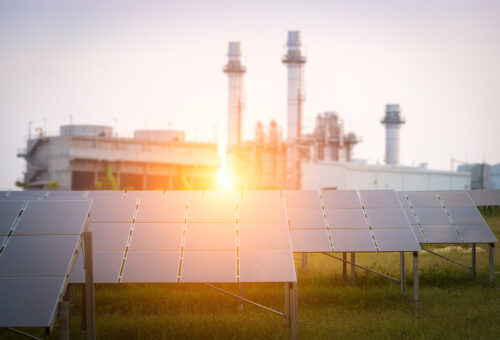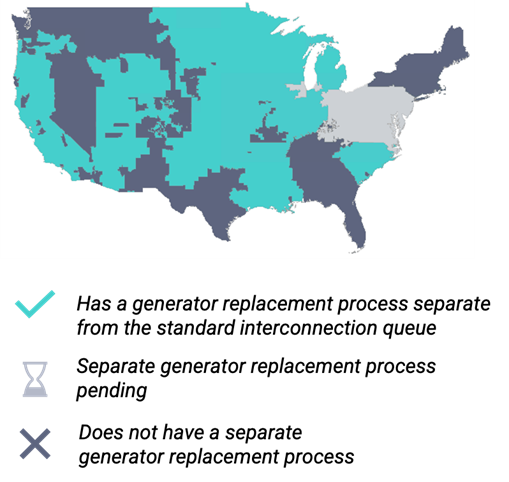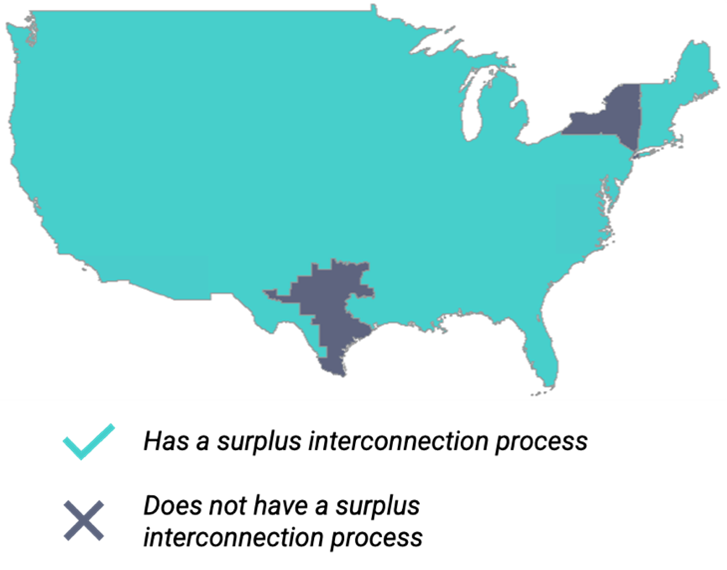
Clean Repowering: A Near-Term, IRA-Powered Energy Transition Accelerant
How new clean electricity generation and storage projects can weather the turbulence and help the energy transition stay on course.
The clean energy transition in the United States is currently experiencing some turbulence. On the one hand, the passage of the Inflation Reduction Act and historic levels of funding available for clean energy projects are creating strong tailwinds that are building the clean energy project pipeline; on the other hand, interconnection timelines and costs have risen dramatically in recent years, becoming headwinds that are slowing the pace of clean energy deployment onto the grid. Navigating through the turbulence will take time and dedicated effort. Fortunately, there is a near-term opportunity to capitalize on the tailwinds and circumvent the headwinds in order to bring more clean energy online quickly and more economically.
Siting new clean generation or storage at the same point of interconnection as existing or retiring fossil generators allows these projects to take advantage of specific IRA incentives and to potentially pursue a streamlined interconnection process. We refer to this opportunity as clean repowering, and have conducted a research and analysis effort to better understand the scale and scope of this clean energy development pathway.
Our analysis revealed 250 GW of potential for clean repowering projects across the country, representing a significant accelerant that could be used in pursuit of a rapid and reliable energy transition (Exhibit 1).
Uptake of clean repowering is influenced by two primary considerations: IRA incentives that make additions of clean energy at existing generation sites an even more financially attractive proposition, and the regional interconnection rules that dictate the process that new clean energy generators must follow to connect to the grid.
IRA Incentives
Given that clean repowering projects are located in close proximity to existing energy infrastructure, they are likely eligible for IRA incentives and funding that is specifically targeted toward energy communities.
- The energy community tax credit bonus provides 10 percent adders on the Investment Tax Credit and Production Tax Credit for projects on a brownfield site, in an MSA or non-MSA meeting fossil employment and unemployment criteria, or located in or adjoining a coal closure community.
- The DOE-administered Energy Infrastructure Reinvestment (EIR) program offers up to $250 billion in loan guarantees for projects that replace energy infrastructure or enable existing energy infrastructure to reduce emissions. Funds for the EIR program must be committed by 2026, so the time to start developing eligible projects is now.
Regional Interconnection Rules
The streamlined interconnection processes that may apply to clean repowering projects are “Surplus Interconnection Service” requests and “Generator Replacement” requests. Both processes have less onerous study requirements due to the reduced grid impact of adding generation where interconnection infrastructure and rights already exist. This means that interconnection studies for these new resources could happen in a matter of months, rather than the multi-year process that interconnection has become in much of the country. The geographic scope of these processes varies, limiting in some cases where faster interconnection might actually be pursued.
- Surplus interconnection service requests: This refers to adding new generation at the site of an existing plant, which would continue to operate. The capacity of the new generator would be sized to reflect the “spare” interconnection rights that the existing generator might not be fully utilizing in its current dispatch. For example, a gas peaker plant that does not generate often could choose to add a new solar-plus-storage resource on-site that could inject capacity when the gas generator is not running. The surplus interconnection service process is regulated by a FERC Order and is thus present in most parts of the country—absent ERCOT, which is not FERC-jurisdictional, and NYISO, which obtained a waiver from the FERC rule (Exhibit 2).
Exhibit 2: Regions where the surplus interconnection service process is available
- Generator replacement requests: This refers to adding new generation at the site of a retiring plant. The capacity of the new generator would not be able to exceed the interconnection rights of the retiring generator, and certain requirements around ownership and the timeline for replacement must be followed. This process exists in some regions of the country (MISO, SPP, and some utility territories) but not others, as there is no FERC order standardizing the practice (Exhibit 3).
Exhibit 3: Regions where a generator replacement process is available

Source: Claire Wayner, RMI
At a time when energy stakeholders are grappling with a lot of tough questions about the pace of the energy transition and associated impacts on economics, policy, and reliability, clean repowering offers a multi-faceted solution: by reusing existing grid infrastructure and harnessing available federal funding, these projects support affordable energy costs for consumers, and what’s more, they retain jobs and investment in communities where energy has historically served as a meaningful economic driver. By allowing for faster interconnection of carbon-free resources, especially at the site of policy-driven retirements, these projects can be a vital tool for realizing state and federal clean energy policy goals on time. And by minimizing the grid impact of new resource entry and resource retirements, these projects can help ensure reliability amid the energy transition.
Clean repowering projects are planes capable of weathering turbulence, and they should be deployed wherever feasible to help the energy transition stay on course.
